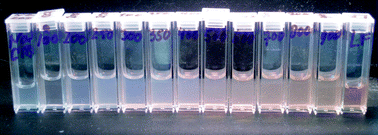Co-acervates of lactoferrin and caseins
Abstract
On

* Corresponding authors
a
Fonterra Research Centre, Private Bag 11029, Dairy Farm Road, Palmerston North, New Zealand
E-mail:
skelte.anema@fonterra.com
Fax: +64 6 3504607
Tel: +64 6 3504649
b
Van 't Hoff laboratory for Physical and Colloid Chemistry, Utrecht University, Utrecht, The Netherlands
E-mail:
C.G.deKruif@uu.nl
Fax: +31 302533870
Tel: +31 622 48 5404
On

 Please wait while we load your content...
Something went wrong. Try again?
Please wait while we load your content...
Something went wrong. Try again?
S. G. Anema and C. G. (Kees) de Kruif, Soft Matter, 2012, 8, 4471 DOI: 10.1039/C2SM00015F
To request permission to reproduce material from this article, please go to the Copyright Clearance Center request page.
If you are an author contributing to an RSC publication, you do not need to request permission provided correct acknowledgement is given.
If you are the author of this article, you do not need to request permission to reproduce figures and diagrams provided correct acknowledgement is given. If you want to reproduce the whole article in a third-party publication (excluding your thesis/dissertation for which permission is not required) please go to the Copyright Clearance Center request page.
Read more about how to correctly acknowledge RSC content.
 Fetching data from CrossRef.
Fetching data from CrossRef.
This may take some time to load.
Loading related content
